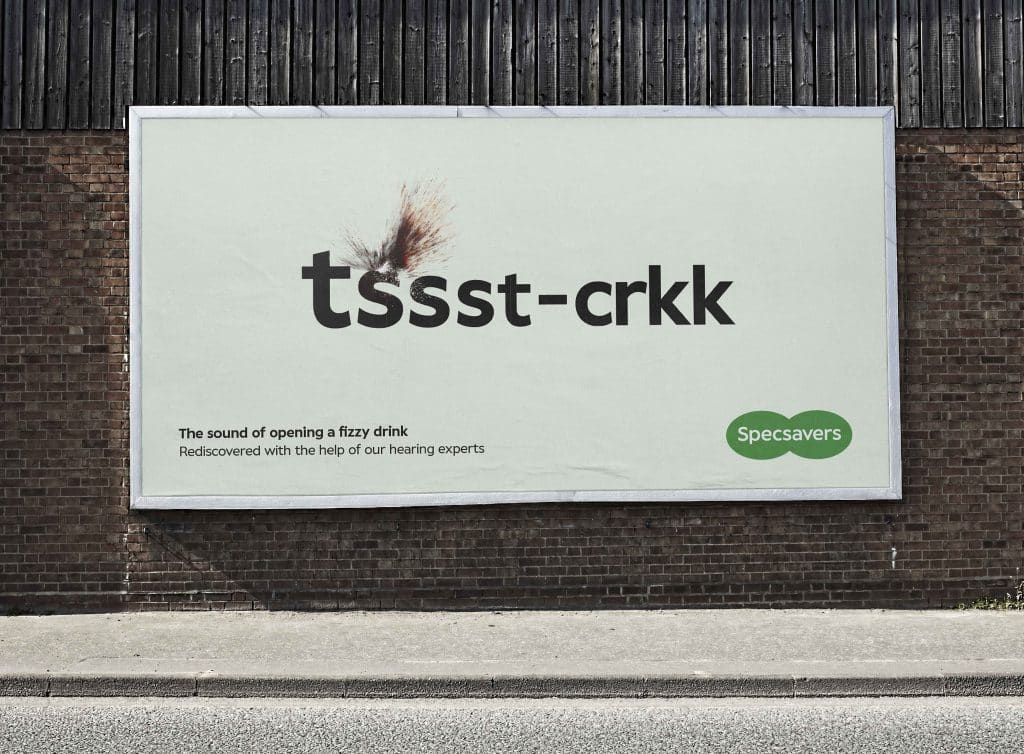What’s in a name? The importance of branding for in-house agencies

The Agency at Specsavers has renamed itself Specsavers Creative: we look at why, for in-house agencies, such distinctions can really matter
Are you an in-house agency? A studio? Or even a Department of Mind Control? Are you Zest or Sips & Bites? The Kitchen or Studio A?
Whatever your in-house agency (IHA) is called, it is likely to be permanently in a state of flux, shifting its capabilities and remit, its positioning and partners, as it and the business it sits within respond to changing conditions and demands. Which means that IHAs are on a constant mission to explain to the business what they are there to do.
Naming can therefore become very important. Some go with a ‘brand’ – like Generation at Three – others are more descriptive. And what works at one stage of an IHA’s evolution might not be appropriate as it recalibrates.
BEING THE ‘CREATIVE COMPASS’
Take Specsavers. It has one of the most celebrated in-house agencies in the world. It started out as a creative department, then became The Agency at Specsavers, and now has rebranded as Specsavers Creative.
Explaining the decision, Nicola Wardell, MD of Specsavers Creative, says that referring to themselves as The Agency began almost organically as the department built out its capabilities. “We look and feel more like an agency, we’re shaped like an agency and we operate, in some ways, like one,” she says. Adopting the name of The Agency got them to where they had wanted to be but, with a renewed focus on being as close to the business as possible, it had brought some challenges.
“‘Agency’ can be a loaded term, where it’s more associated with external partners than colleagues,” Nicola says. Her team felt it was important to be viewed as a department within Specsavers, just as the business has an HR department and a finance department, rather than something removed from the core of the organisation.
Another driver was confusion about what the term ‘agency’ meant to colleagues who have no experience or knowledge of advertising and marketing. “‘Agency’ means nothing to them – we could be a recruitment agency or any kind of agency. So rebranding helps clarify that: it’s important to be really specific about what we do,” she says.
And calling itself The Agency also caused some confusion with regional marketing teams, who are working with various other agencies for social, or media and so on. If they were The Agency, who were the others?
Wardell says the new name stemmed from a period spent reflecting on what they were there to do. “Creativity is the fuel that supercharges our marketing activity, something we’ve been proudly doing in-house for decades. So, we have decided to put the ‘creative’ right back at the centre of our name, focusing on the role that we uniquely play within the Specsavers business,” she says.
“We’re here to be the creative compass, for our business and our brand. That doesn’t necessarily mean producing every tiny bit of creative work – we have partner agencies that do things like that – but setting the direction for the creative output and decisions that the business makes is a really important part of our role that we wanted to reinforce.”
With the name change, Specsavers Creative’s client partners, who perform an account management function, will now be known as creative business partners. “That reflects how the rest of the business operates – we’ve got HR business partners and finance business partners, and technology business partners – so it’s very meaningful within our business,” Nicola says. The name change, she adds, reinforces that “the conversation is one of equality and partnership, rather than ‘in service of’.”
Earlier this year, Reckitt’s Lee Barnsley addressed this issue in a previous article on ihalc.com “Companies tend to treat their in-house teams like external suppliers. The trouble is, if your team are setup that way then you can’t really complain if that’s how they treat you,” he wrote. “The relationship becomes more about transactional exchange, delivering on briefs rather than being focused on understanding critical business challenges and designing to not only overcome but to redefine the consumer experience.”
EVOLVING THE IN-HOUSE REMIT
Creativity has the potential to impact businesses way beyond what might traditionally be thought of as marketing. In-house teams are ideally placed to maximise that opportunity.
A good example is LegoCon, a virtual convention for fans, which was devised and executed by LEGO Agency. Rather than an answer to a brief, it came from the agency observing changes to consumer behaviours during lockdown and aligning those with the business’s priorities around improving the digital discoverability of its products.
When it comes to terminology, a lot depends on how evolved or expanded the in-house function’s remit has become. An ‘agency’ implies a more wide-ranging remit than a ‘studio’ – most likely one where campaign ideas are originated rather than merely adapted – and using the word will help convey that change to stakeholders. Calling yourselves ‘creative’ on the other hand, may obscure the fact that the team includes functions such as content, media, data insight and design.
And while creating some distance between the ‘agency’ and the rest of the business can prove a problem for some, for others, that distance is precisely what is needed in order to build respect and credibility. Importing some of the structure and behaviours from external agencies can also help in this respect, but, equally, when colleagues become ‘clients’, some of the advantages of being in-house can be lost.
In the name game, as with so many aspects of in-house life, it all depends on what is right for that business at that time.
